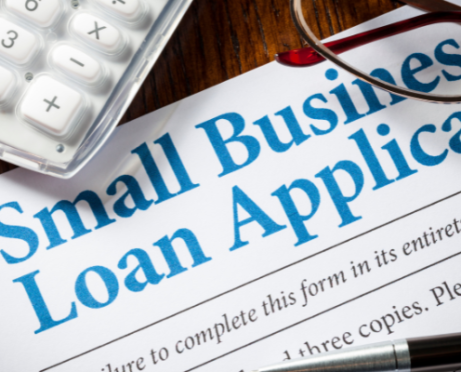
Nothing is more frustrating than wondering if your pricing is right when submitting proposals or launching new products.
If the price is too high, you may lose the prospect before the conversation goes to the next step.
If it’s too low, you could be leaving money on the table. And you could end up resenting the work if you’re delivering more value than you’re getting paid for — especially if the situation goes on too long.
Your profitability is at stake when it comes to pricing, so give it the thought it requires and don’t shortchange yourself or your customers.
Here are five tips you can use to figure out the right price for you and your clients, the ultimate win-win situation.
Benchmark Your Product Price Against Your Competitors
If you’re launching something new and you truly have no idea what people will pay for your service or product, take a look at how your ideal clients are currently solving the problem you’re looking to help them solve, and compare your solution to the one they use now:
- Does your solution offer technological advantage?
- Does your solution provide superior value some way?
- Does it save the user time, provide additional levels of help or support, or have a much shinier look and feel that people want?
Even though your product or service may differ from that of the competition, knowing what clients are paying now gives you a sense of what people are willing to pay and how urgent it is for them to solve the problem.
Compare the value you’re offering to the value they’re getting now and price accordingly.
You can also experiment with an introductory price that you communicate will go up after a certain period of time. This lets customers know they’re getting extra value while you determine how much the real price of your product will be.
Start Your Free Trial with P2P Today
A/B Testing
At the end of the day, the only way to find out if someone will pay a price you want to charge is for you to offer that price and see if someone will pay it.
If you offer the price to enough people who tell you, “No,” your price may be higher than the average ideal client is willing to pay. Before coming to that conclusion, you can test this by offering the same services to different people for different prices and see how the conversations differ.
Sometimes in this situation, if you raise the price people may be more willing to buy because if it’s too inexpensive, they question the quality.
After doing enough deals at various prices, you’ll figure out what people value and you’ll be able to finalize your pricing strategy.
Interview the Market
Take every opportunity to talk to potential clients or other influencers in your space about your offer. Ask questions that will help you understand the core problem clients are solving and how solving the problem in a quality way will improve their life. Does it improve it a lot or just a little?
It’s important to bring up pricing in these conversations. Find out what people are paying for their current solution, if they’re happy with it, how they would change it if they could, and what they would pay if your solution were available to them now.
Depending on the product or service, buyers may be trained by their experience to expect a particular price. This is true for things such as clothes and accessories as well as cloud-based technology offerings.
Think about the Gap and Netflix and how their predictable pricing impacts others offering similar products and services.
If you’re in a genre that has trained the buyer and you want to charge a different price, be prepared to explain how your pricing makes sense for your offering because of the value it offers.
Work the Sales Process
Don’t rush to close the sale if your client is expecting a process. Go through the steps they need to go through so they can get comfortable with the price, especially if it’s more than they really want to pay, and you know they’re willing to pay what you’re charging. Some sales processes take a year, some take three months, and some take five minutes.
Start Your Free Trial with P2P Today
This process often requires you to ask your client several rounds of questions. This leads them through their own thoughts as they find their way to signing a contract or buying a great new outfit.
Expert sales trainer Phil M. Jones teaches sales professionals that the person asking the questions is the one in control of the conversation. Take his advice and be prepared to know what questions your client needs to answer for themselves to get to the point of “Yes!”
Your sales success is dependent on knowing how long it should take for each client to get to “Yes” based on the process they need to go through.
There are different types of clients and when you know how to determine what type of a client the prospect is, you know about how long it will take to close a sale. Drive the process to that length of time and you’ll more often get your price.
Mainstream vs. Luxury Solutions
You need to know your lane and price for it.
You know the difference between a solution with all the bells and whistles and one that will solve the problem, but you got there flying coach without an assigned seat if you know what I mean.
Price your offering in alignment with the value you’re offering. If you’re selling an online course and it’s your first version, price it accordingly. If you overprice something and people buy it, they’ll eventually figure out what happened and be skeptical of buying from you again in the future.
Revisit these tips anytime you’re looking to figure out a price. This is not the area where you want to take a shortcut.
Do the analysis, ask the questions, and put in the thought necessary to come up with your best determination of the price. This will put you in a position of power when the client is ready to discuss price and ask you questions.
If you try to wing the pricing, you won’t be able to answer questions with grace and it’ll be obvious.
At the end of the day, know at what price you want to offer your products and services. Figure out how to deliver value at that level and then go for it. Get feedback, adapt as necessary, and kill it!
Belinda DiGiambattista is a serial entrepreneur, business coach, and outsourced financial controller, and can be found at www.belindadi.com.
Start Your Free Trial with P2P Today




